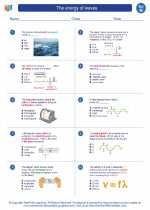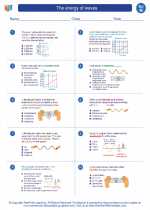Photosynthesis
Photosynthesis is the process by which green plants, algae, and some bacteria convert light energy, water, and carbon dioxide into glucose (a form of chemical energy) and oxygen. This process is essential for the survival of most forms of life on Earth, as it is the primary source of oxygen in the atmosphere and provides organic compounds that serve as food for other organisms.
Key Concepts
- Photosynthesis Equation: The overall chemical equation for photosynthesis is:
6CO2 + 6H2O + light energy → C6H12O6 + 6O2 - Chloroplasts: Photosynthesis occurs in the chloroplasts of plant cells. These organelles contain chlorophyll, the green pigment that captures light energy.
- Light-Dependent Reactions: These reactions occur in the thylakoid membranes of the chloroplasts and require light energy to produce ATP and NADPH, which are used to power the Calvin cycle.
- Calvin Cycle: Also known as the light-independent reactions, this is the phase where ATP and NADPH produced in the light-dependent reactions are used to convert carbon dioxide into glucose.
- Factors Affecting Photosynthesis: Factors such as light intensity, carbon dioxide concentration, and temperature can affect the rate of photosynthesis.
Study Guide
When studying photosynthesis, it's important to understand the key concepts and processes involved. Here are some tips for effective studying:
- Review and memorize the photosynthesis equation, understanding the reactants and products involved.
- Understand the role of chloroplasts and chlorophyll in capturing light energy.
- Learn the difference between light-dependent and light-independent reactions, including the specific molecules and processes involved in each phase.
- Explore the factors that can affect the rate of photosynthesis and how they impact the overall process.
- Practice drawing and labeling diagrams of the chloroplast, thylakoid membrane, and Calvin cycle to reinforce your understanding of the process.
By mastering these key concepts and study strategies, you can develop a strong understanding of photosynthesis and its significance in the natural world.
.





